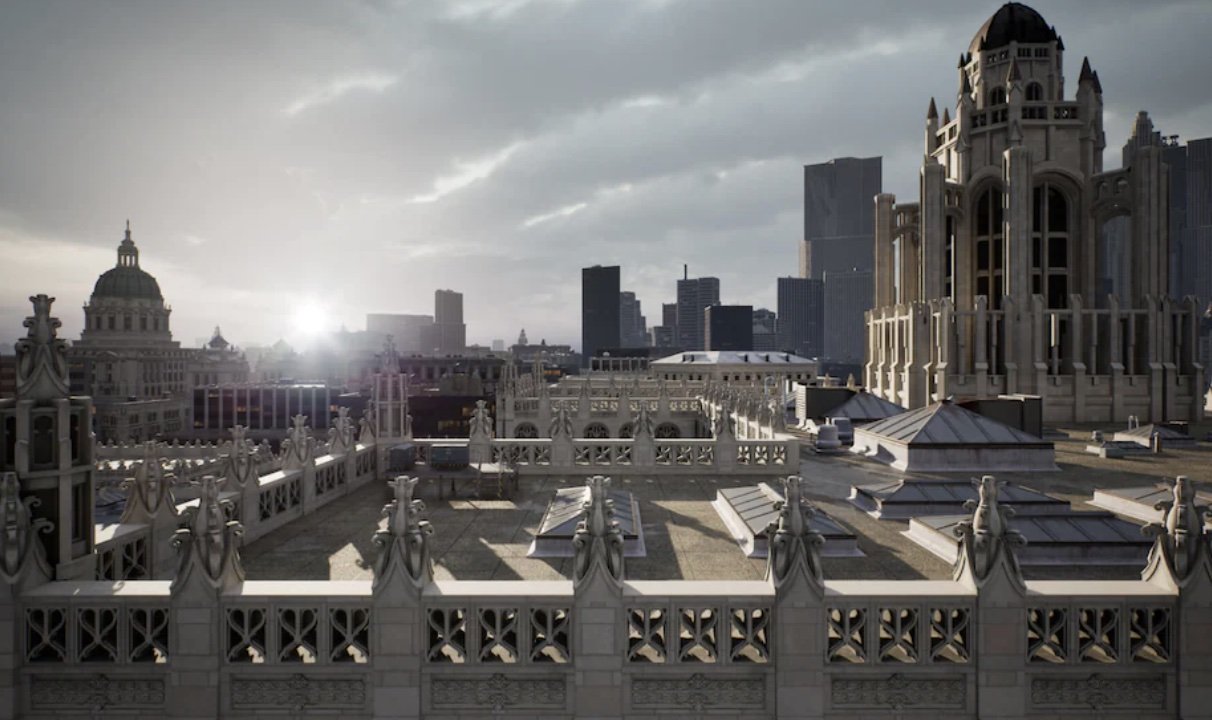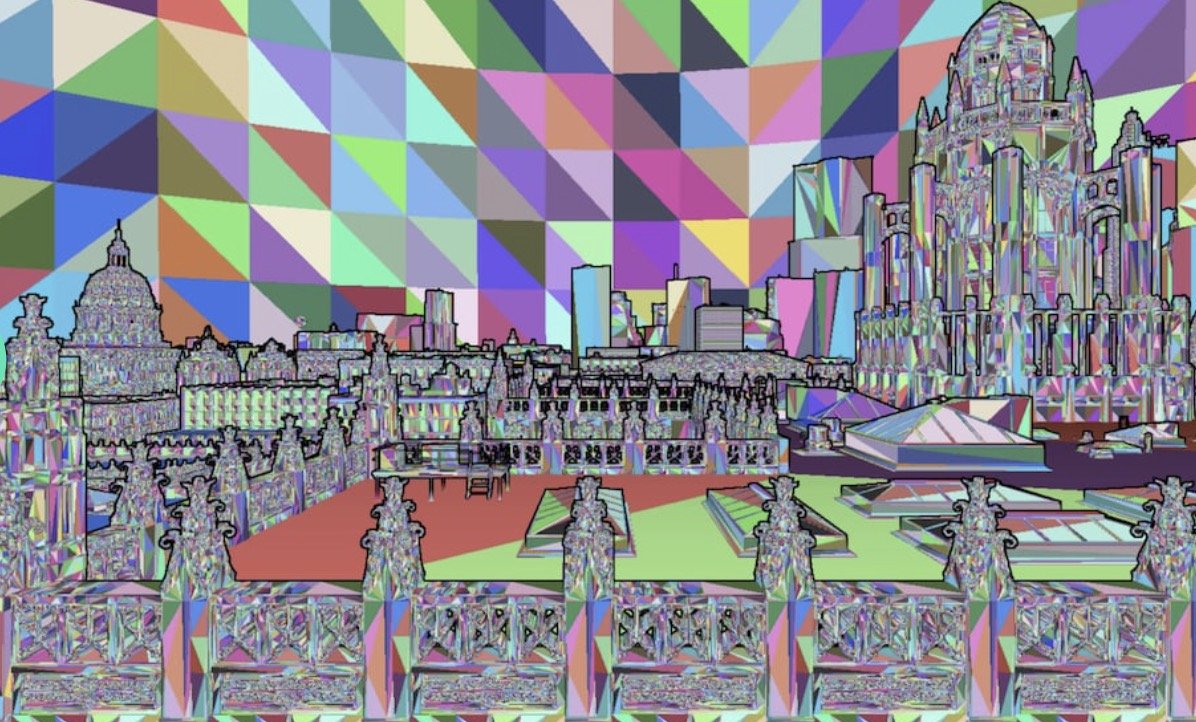Epic Releases Unreal Engine 5!
About two years ago, Epic announced it was going to release it’s next-gen game engine, Unreal Engine 5. It is now available to download here!
What are the new features and improvements everyone is so excited about?
Lumen
Arguably the most exciting new feature of Unreal Engine 5 is Lumen, which allow for dynamic global illumination and reflections.
This is an absolute game changer as Lumen is a fully dynamic global illumination and reflections solution that enables indirect lighting to adapt to ON THE FLY changes as you move subjects around your 3D environment.
Lumen - Unreal Engine 5
With Lumen, you no longer have to fake it by authoring lightmap UVs, waiting for lightmaps to bake, or placing reflection captures.
Talk about speeding up your workflow!
UI + Workflow Improvements
Unreal Engine 5 has gotten a complete UI makeover. Quixel Bridge is now fully integrated. (Learn more about Quixel Bridge here.) Now you can now drag-and-drop access to the entire Megascans library. (The Megascans library is a library full of photo realistic assets photographed and ready for use in the Megascans library!) Quixel bridge is part of the new Create menu for acquiring content and creating and placing Actors.
New Unreal Engine 5 UI
The viewport space has now been freed up and you can now easily summon and stow the Content Browser and dock any editor tab to a sidebar. Plus, it’s fast now to find the properties you’re looking for in the Details panel.
Nanite + Virtual Shadow Maps
It’s incredible how you can create worlds with massice amounts of geometric detail using Nanite. Nanite is a virtualized micropolygon geometry system, and a new Virtual Shadow Map system.
You can directly import and replicate multi-million-polygon meshes while maintaining a real-time frame rate without any noticeable loss of fidelity.
This system intelligently streams and processes only the detail you can perceive, which largely removes poly count and draw call constraints.
World Partition
With the new Unreal Engine 5, a new World Partition system changes how levels are managed and streamed, automatically dividing the world into a grid and streaming the necessary cells.
World partition in Unreal Engine 5
Team members can now also simultaneously work on the same region of the same world, thanks to a new One File Per Actor system, while with Data Layers, you can create different variations of the same world, such as day and night versions, as layers that exist in the same space.
Character + Animation
With Unreal Engine 5’s built in artist-friendly animation toolset, animators like us can iterate faster and more accurately, with reduced need for time-consuming round-tripping with DCC tools.
We can quickly create rigs in Control Rig, then pose and animate them in Sequencer, or use the new retargeting toolset to easily reuse existing animations!
We can even dynamically adjust animations at runtime to compensate for different scenarios. These would include such things as varying speed or terrain.
Modeling
In Unreal Engine 5, the modeling toolset has been. extended and improved. These include mesh editing, UV creation/editing, baking, and mesh attributes.
With these tools, artists like us can develop and iterate on assets directly within the Unreal Editor, saving time and reducing the potential for errors. Additionally, it makes it faster and easier to work with dense meshes, such as those generated using photogrammetry tools or kitbashing.
Unreal Engine 5 Modeling
Not Just for Game Developers
Even thought Unreal Engine was designed for game developers, it’s no secret it’s being used across multiple industries. Animation, television and film just to name a few.
Most of us know how Unreal Engine was utilized on The Mandalorian using virtual sets. Unreal has completely disrupted the filmmaking industry and we see it disrupting the 3D animation space as well.
Unreal Engine Pipeline
“It really means that across media boundaries, whether you’re making a movie, a TV show, or even doing an enterprise application, you don’t really have to think anywhere near as much about making that choice,” he explains. “Obviously, if you’re going to ship on on lower-end platforms, you still have to think about how many triangles are in the scene. But on the new generation of hardware, it absolutely is a game-changer. It’s totally feasible that a scene that’s made for a streaming show at Netflix or Disney — where they’ve basically used the highest resolution assets — there’s a chance now that stuff can turn up in a game or, as we head towards the future, show up in some metaverse experience.” Says Epic CTO Kim Lebreri.
Unreal Engine and the Future of Animation
So why do we think that Unreal Engine is going to play a HUGE role in the future of animation?
The first reason is because faster = more creative. When you are able to render frames in fractions of seconds it gives you the ability to produce the most creative content. You can change your mind later into the process without hours or days of rerendering and make decisions on the fly. This allows animators to iterate fast and find the best versions of their story.
Another game changer is being able to get any look that you want. Some people think you can only go for one look in Unreal Engine but that’s just not the case! Unreal Engine has a flexible node-based Material Editor which allows you to push the limits of your imagination and create any visual style. This includes photorealistic animation work to classic CG, cel-shaded to anime, hand-drawn to hyper-stylized, and more.
With Unreal Engine, you get a fully loaded toolset right out of the box with everything you need to bring your characters and worlds to life. It includes built in animation tools. You get a Landscape system for environments, particles and physics, a multi-track nonlinear editor, support for strand-based hair and fur, and connections for performance capture tools.
Unreal Engine Animation Pipeline









